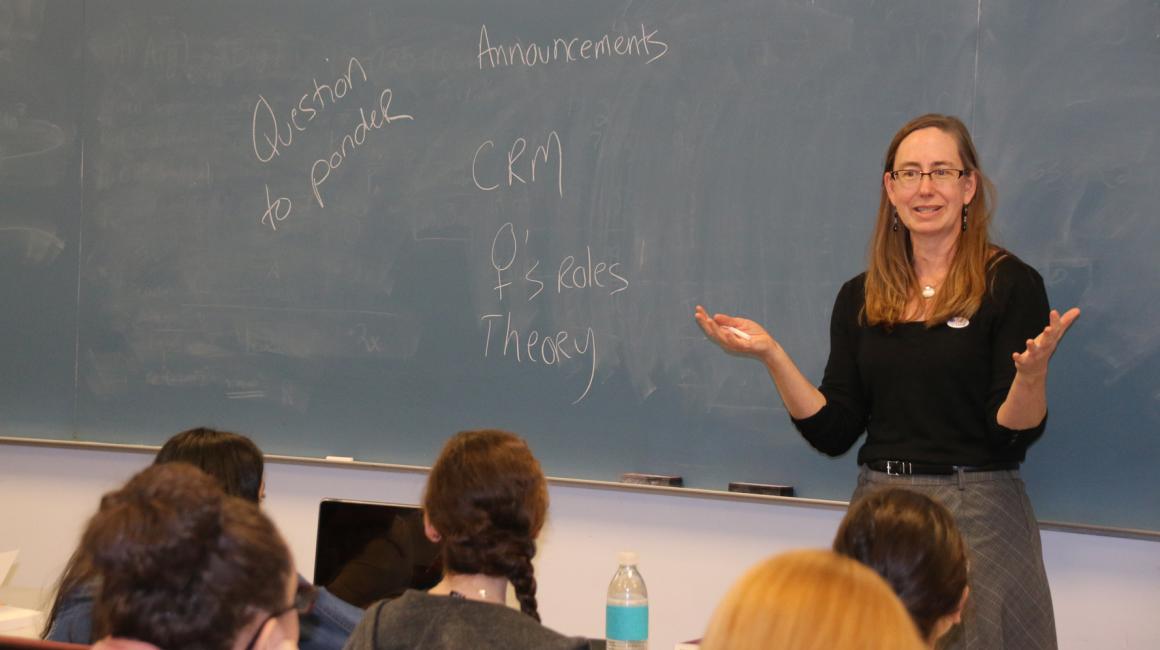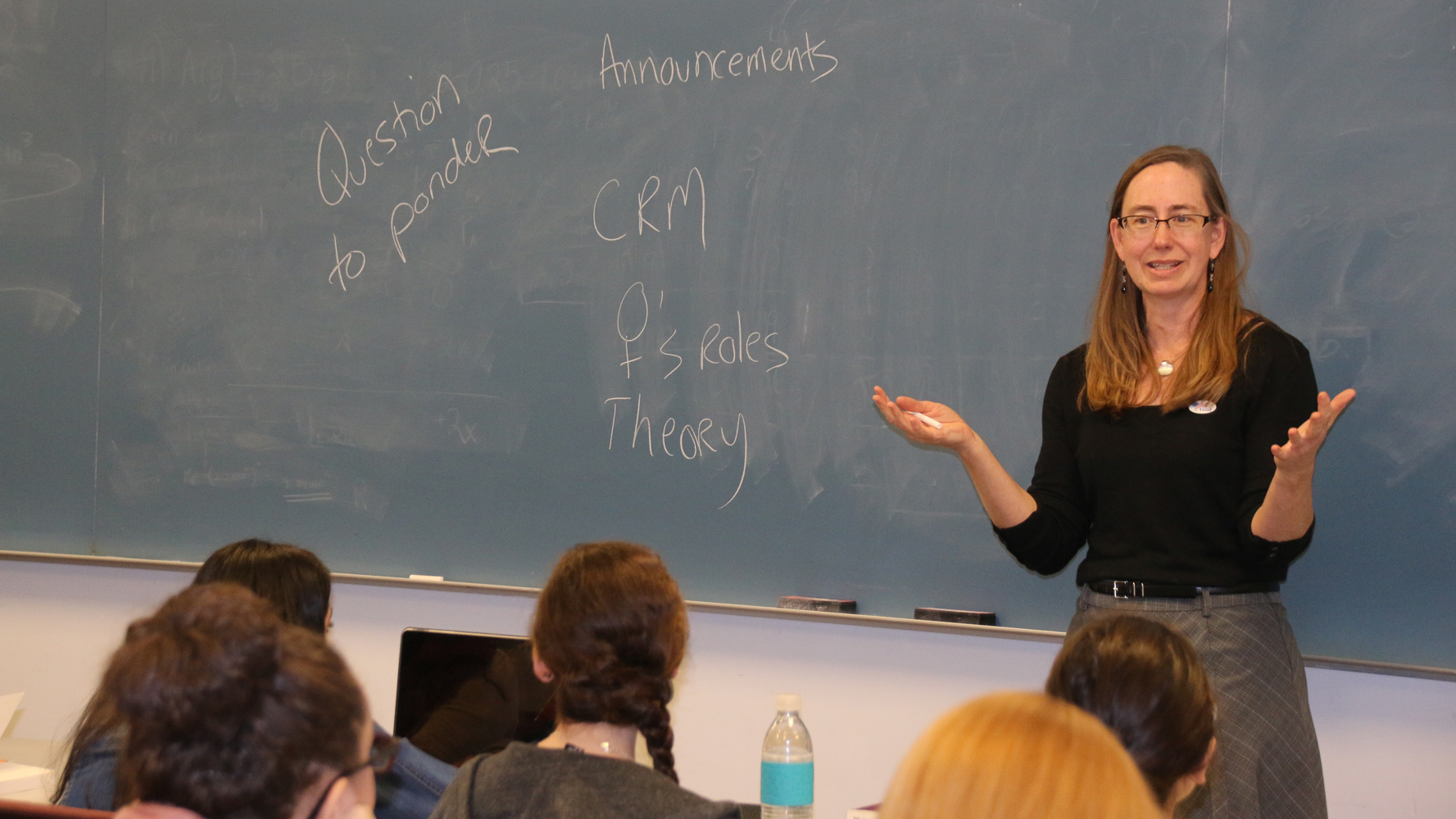
Standing in front of the class, Professor Georgina Hickey asks her students to list civil rights activists who were women.
The class started loud and strong. “Ella Baker.” “Fannie Lou Hamer.” “Rosa Parks.”
But after a few names, the class trailed off.
“We all know they were there, but they weren’t front and center,” Hickey said. “As retired Professor Gloria House, who taught on this campus and was a civil rights activist explained, ‘We were changing the world. Arguing about who got the credit was wrong.’
“I can definitely understand that. But there are more reasons for women’s invisibility we should explore.”
The seminar course—WGST/HIST:3651 Women, Leadership and Social Change— examines women’s leadership in movements for social change through case studies from 19th and 20th century U.S. history. The class, which was created in 2004 to support the Women in Learning and Leadership Program, highlights activists from a variety of movements surrounding economic justice, race relations and gender equality.
Hickey said women have always had significant leadership roles in movements.
But, for various reasons, most have been overlooked. Some weren’t vocal about it. Others had the credit taken by someone else. Or historians omitted them. Sometimes the women themselves found it advantageous to “fly under the radar” and organize outside of the spotlight.
“Women’s leadership has traditionally been undervalued or gone unrecognized altogether by contemporaries and historians alike. This course demonstrates that women have left an inspiring and instructional legacy of leadership,” she said.
Senior Danielle Warren said she’s aware that females do not get noted the way their male counterparts do, and she took the class to learn more.
“I wanted a well-rounded sociological framework about the contributions women have made in history,” she said. “The class gives you information that seems to have been erased in the popular media. And it gives a more intersectional perspective than you get in history or even in women’s history.”
Hickey said it’s important to understand the experiences of women and the unique challenges and rewards they encountered as leaders.
“It is more than just adding women to the historical record, though that is important. It is about understanding the ways in which race, class and gender intersected in real people’s lives and what happens when people start to look critically at their place in society,” she said. “It is about understanding the process by which individuals come to understand and challenge structural inequality through collective movements for social change.”







